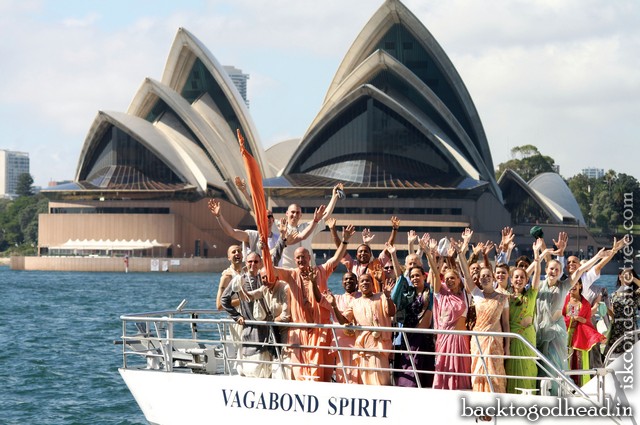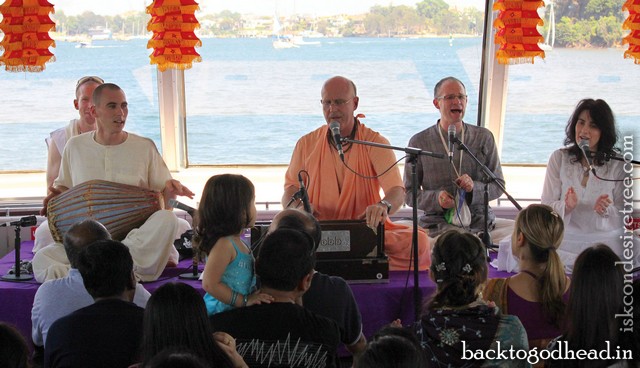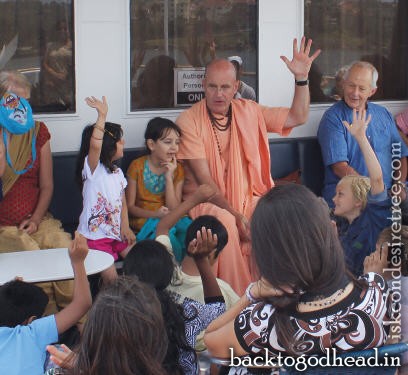
The sun’s rays danced on the glistening blue waters of Australia’s famous Sydney Harbour. The Vagabond Spirit, a sturdy 108-foot catamaran, was docked under the Harbour Bridge, captain and crew ready to depart. A heavy-set man with a black pirate hat and an eye patch greeted them with a wry smile.
“We will discover treasure aplenty on this voyage, shipmates,” he said, “but keep the rum locked away!”
Treasure hunting has historically been a popular activity on the Sydney Harbour. In the eighteenth century, European explorers were drawn to its waters seeking to establish it as a gateway to their new colony and all the riches that the Australian subcontinent held in store. The colony’s first governor, Arthur Phillip, described it in his first dispatch to England as “the finest harbour in the world.”
Centuries later, millions of treasure seekers are drawn to Sydney Harbour each year, with tourism contributing to a large sector of Australia’s economy. For the year ending in June 2009, Australia received five and a half million international visitors.
Both on foot and in hired boats, the treasure hunters seek to experience first hand Sydney Harbour’s natural beauty, with its pristine sandy beaches, botanical gardens, tributaries, and islands teaming with rare specimens of wildlife.
Magnificent manmade structures housing some of Australia’s most valued national treasures adorn the water’s edge. Among these, the sail-shaped Sydney Opera House, designed to represent the sails of the first fleet of European explorers, commands the greatest interest. Events such as the New Year’s Eve fireworks and the Sydneyto- Hobart Yacht Race are also well known international crowd drawers.
Popular with private parties and corporate employees are treasure hunts conducted for pleasure or team-building exercises. Dressed as pirates, they split into teams and follow clues left around Sydney Harbour, trying to be the first team to reach the treasures of Australian wine, chocolate, or gift vouchers.
A Unique Group Of Treasure Hunters
The Vagabond Spirit was on a different journey. The organizer or chief mate, Vara-nayaka Dasa, is also the president of the Sydney ISKCON temple. Playfully wearing a black pirate hat, he smiled as he addressed more than two hundred kirtana enthusiasts packed into the main hull.
“Welcome, shipmates, to Sydney’s Kirtana Cruise 2010!” he declared.
The Sydney Harbour Kirtana Cruise attracts Krishna devotees and yoga practitioners from across Australia eagerly seeking the treasure of singing the holy name. As the boat gently rocked from side to side, the “shipmates” swayed, some in yoga posture with closed eyes and beatific smiles, others dancing, clapping, or playing instruments: karatalas, mrdanga, and harmonium. All were singing the Hare Krishna mantra in response to the calls of lead singer Indradyumna Maharaja. A sannyasi and modernday spiritual vagabond himself, for over thirty years he has been traveling to share kirtana throughout the world.
After forty-five minutes of kirtana, the devotees listened with excitement as Indradyumna Maharaja spoke of the adventures of Prabhupada and his disciples in spreading kirtana culture around the world in the 1960s and 1970s. It was Srila Prabhupada who introduced kirtana to the West, leading a group of singers and dancers under a tree in New York’s Tompkins Square Park through the summer of 1966. Later he sent disciples to Europe, where they enlisted the support of Beatles John Lennon and George Harrison, who were responsible for having Hare Krishna kirtana released as a single that topped music charts around the world.
Today kirtana is a worldwide phenomenon, becoming increasingly popular at yoga studios and even some churches around the world. On January 19, 2009, the day before President Obama’s inauguration, four hundred enthusiasts assembled at Washington, D.C.’s, Church of the Holy City, within view of the White House. There they sought to usher in a new era of hope and change with a kirtana festival called “Chanting4change.”
Awakening Our Original Consciousness

According to ancient Vaisnava texts, kirtana awakens consciousness of our original nature as spiritual beings. The body is an outer covering for the soul within, the real person. As spiritual entities, we are eternal, sentient, and joyful. Misidentification with the body as the self produces fluctuating moods of happiness and distress, as well as the experience of death.
The Vedic texts recommend kirtana as the most effective means to penetrate the coverings of material identification, awaken the soul’s blissful spiritual nature, and reconnect with the Supreme. Such reawakening ends the cycle of birth and death, returning the successful practitioner to the spiritual world, where the Supreme Lord is glorified with joyous singing and dancing. Thus kirtana is an eternal spiritual principle.
About five hundred years ago, Lord Caitanya emphasized the Hare Krishna maha-mantra, “the greatest of mantra chants.” It is not a prayer for material gain or spiritual emancipation, but a selfless prayer of divine love.
Caitanya-caritamrta (adi-lila 17.22) declares, “In this Age of Kali, the holy name of the Lord, the Hare Krishna maha-mantra, is the incarnation of Lord Krishna. Simply by chanting the holy name, one associates with the Lord directly. Anyone who does this is certainly delivered [from material existence].”
Rupa Goswami, a disciple of Lord Caitanya, glorifies Him as the most munificent incarnation because He promoted kirtana and broke major social trends to make it available to everyone, regardless of caste, color, or creed. Thus Lord Caitanya gave everyone the opportunity to become fully enlightened by this simple and blissful spiritual activity.
Carried Above the Waves
Aboard the Vagabond Spirit, participants of all ages, from all over Australia and beyond her waters, jubilantly dove into the kirtana experience.
As the yacht glided across Sydney’s azure harbor and past its crowded beaches, one of the devotees, Kosala, remarked, “I got so into the kirtana that I forgot I was even on a boat!”

When the Vagabond Spirit docked four hours later under the Harbour Bridge, the participants cheerfully disembarked onto dry land.
Vara-nayaka spoke of his purpose in organizing the cruise every year: “Not only does it increase the participants’ taste for chanting Krishna’s name, but it also strengthens the kirtana community, uniting us as one big spiritual family.”
Niti, who flew from Brisbane for the cruise, commented, “It was such a beautiful and fresh location for doing what we always do in our homes and temples.”
Asked if she had found her treasure, Jambavati Dasi, joining the cruise from New Zealand, exclaimed, “Of course! The kirtana was amazing! That’s the real treasure, mate.”
In Brhad-bhagavatamrta (1.9) Sanatana Goswami writes, “The holy name of Krishna is the highest nectar. It is my very life and my only treasure.”
As the authorized process for attaining spiritual love, Krishna kirtana awakens in the heart feelings of spiritual happiness that cannot be compared to the earthly treasures that have been sought since antiquity. The happiness comes not from external settings but from the association of like minded souls who have come together to plunder the treasure chest of love. The holy name is unlimited and ever expanding, and so devotees for generations to come will sing kirtana together on an inward spiritual journey that will take them far beyond the blue oceans of this world.
Gaura Hari Dasa was born in Ireland to devotee parents, Prahlada Maharaja Dasa and ananda Maya Dasi, and took initiation from His Holiness Satsvarupa Dasa Goswami at age sixteen. He has traveled worldwide as part of various festival tours promoting Krishna consciousness. He now lives and works in London with his wife, Balesvari Dasi.
Sri Prahlada Dasa has been practicing Krishna consciousness and singing kirtana since childhood. Currently living in Sydney, where he is completing a Ph.D., he regularly performs kirtana at yoga schools and other venues in the Sydney area and frequently travels to perform kirtana internationally
